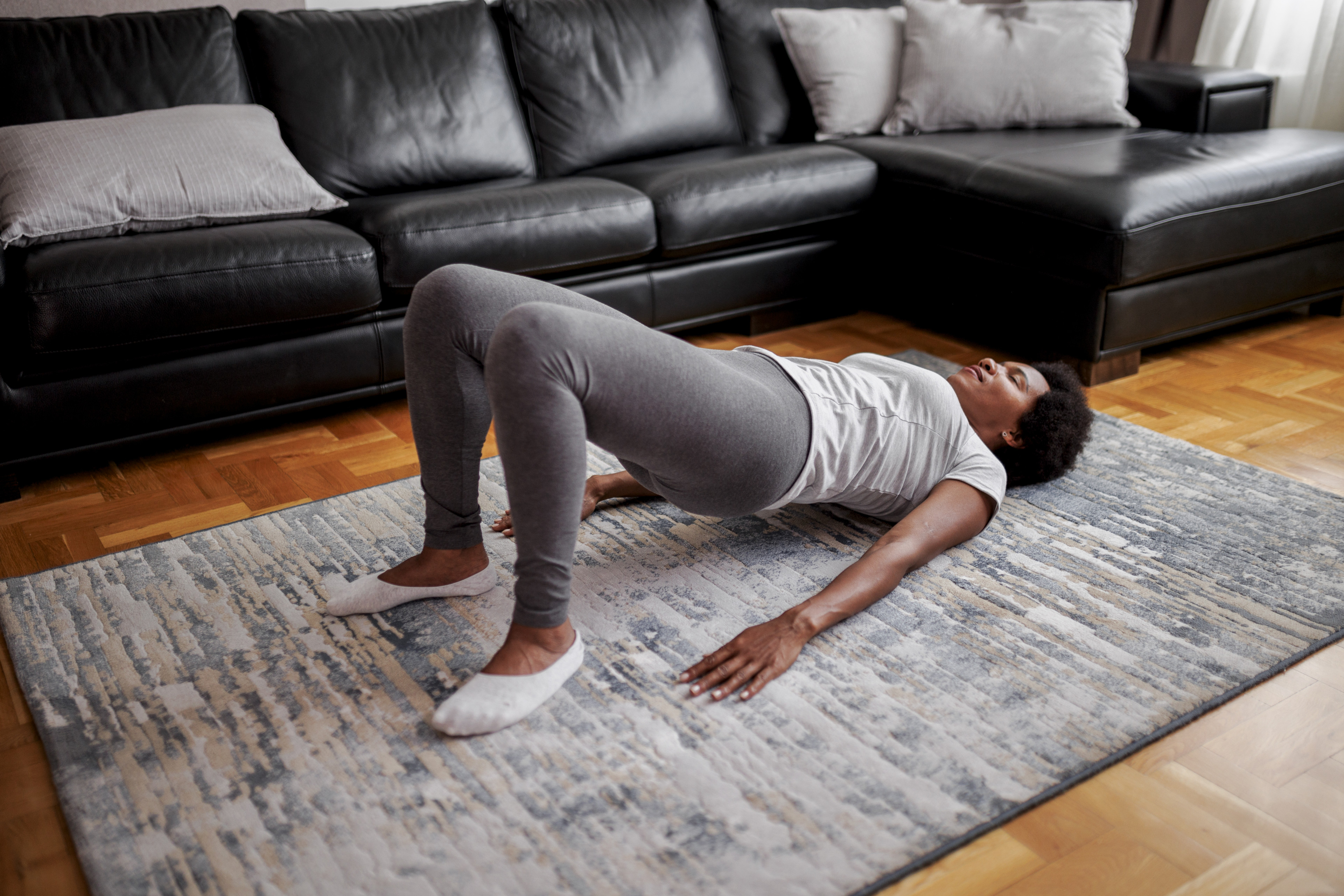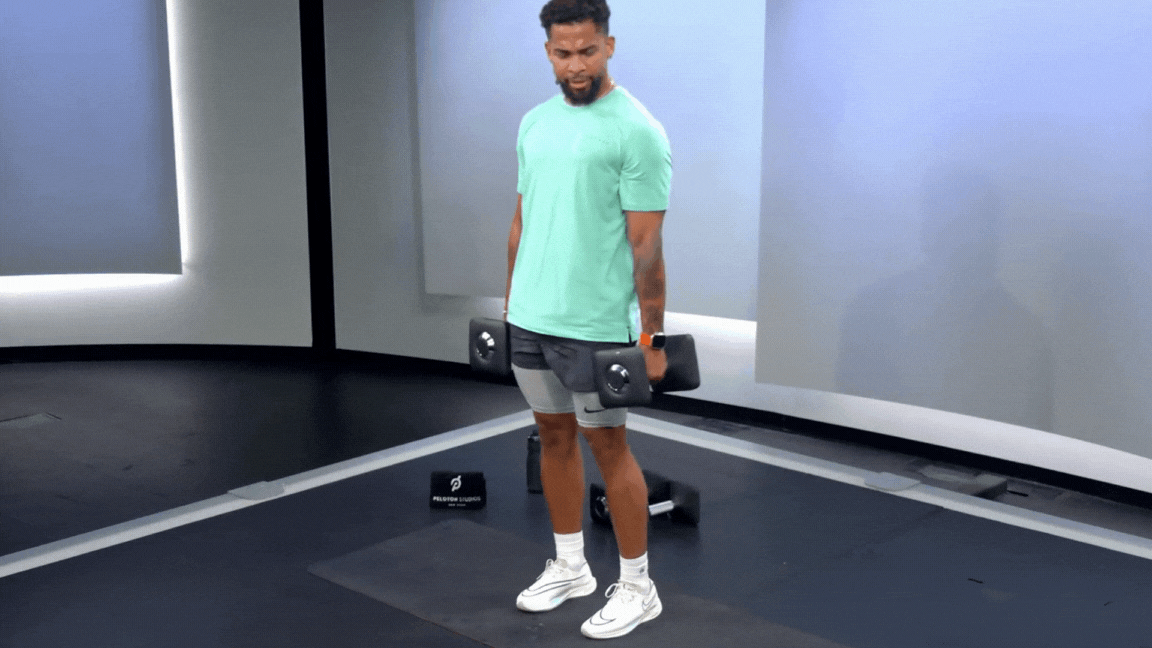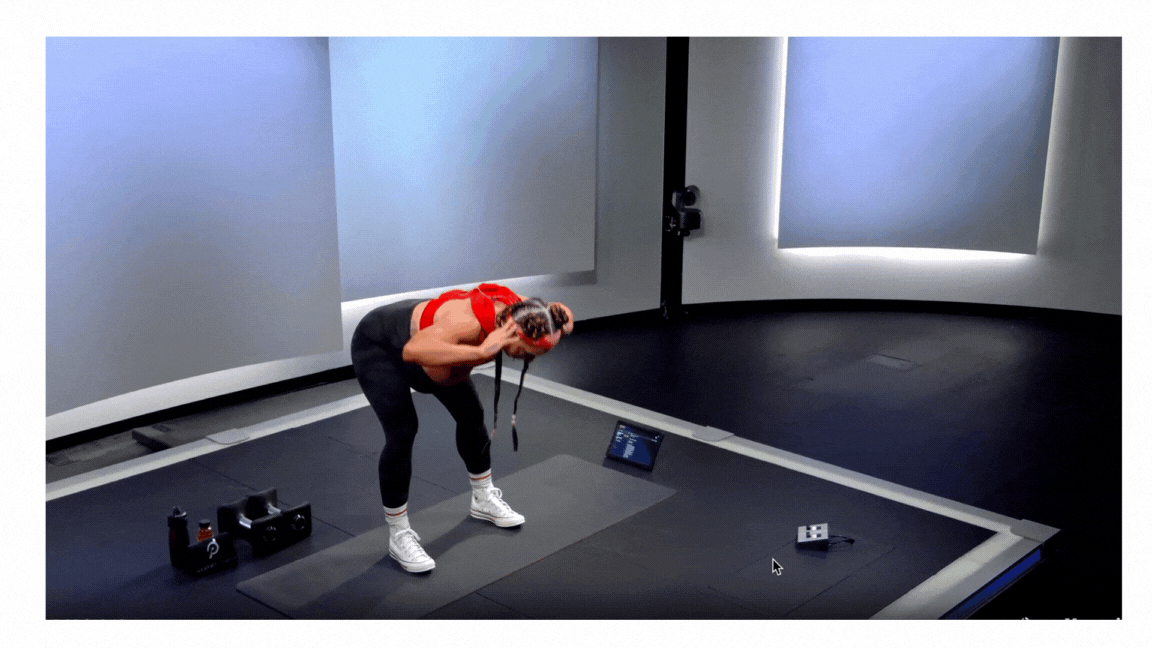
Eleganza/E+ via Getty Images
7 Moves to Train Your Gluteus Maximus, aka the Largest Muscle In Your Body
Build strength and power your everyday movements with these essential lower body exercises.
By Sarah Klein•
Breaking Down the Muscles In Your Glutes
The Benefits of Gluteus Maximus Exercises
How Do You Activate Your Gluteus Maximus?
7 Gluteus Maximus Exercises
How to Add Glute Workouts to Your Routine
Somewhat ironically, the largest muscles in your body—the gluteus maximus—are also the muscles you perch on when you sit all day.
Discover more ways to reach your goals with Peloton
These thick, fleshy muscles—one on each side—are responsible for squats and lunges, sure, but also for everyday movements like walking. And when you neglect them, either through too much time at your desk, on the couch, or not enough targeted exercise, you can literally end up with issues colloquially referred to as “dead butt syndrome.” Technically called gluteal amnesia, this happens when you spend so much time sitting on your glute muscles, they essentially forget how to work properly, according to Mount Sinai.
And no one wants a dead butt—regardless of your fitness goals or experience. “Strengthening your gluteus maximus is important whether you're looking to elevate your athletic performance or seeking functional training,” says Peloton Instructor Katie Wang.
Here, learn all about why your glute max muscles are crucial for everyday physical activity, how to activate your glutes, and the best gluteus maximus exercises to build a stronger backside.
Breaking Down the Muscles In Your Glutes
There are three gluteal muscles in your buttocks: the gluteus maximus, medius, and minimus. Here are the basics to know about each.
Gluteus Maximus
“The gluteus maximus is one of the strongest muscles in the body and is key when it comes to movement of the hip and thigh,” Katie says. It’s responsible for extending and externally rotating your hip, meaning it pushes your leg back behind you as you run or walk. Because it’s the largest of the three gluteal muscles, it’s also most of what makes up the shape of your butt, she says.
Gluteus Medius
Slightly smaller than the glute max is the glute medius, which helps move your leg away from your body and internally and externally rotates your hip, according to the American Council on Exercise (ACE). The gluteus medius—along with all the muscles in your butt—also helps stabilize your hips and pelvis throughout your movements, Katie says.
Gluteus Minimus
The smallest of the three gluteal muscles, the gluteus minimus helps the medius move your leg out to the side and internally rotate your hip, according to the ACE. It’s also involved in stabilizing your hips and pelvis.
Related Articles

Strength Train
The Pistol Squat Is More Than Just a Fitness Flex. Here’s Why It’s Worth Your Time

Strength Train
This Lunge Variation Targets the Quads and Glutes. Here's How to Do It

Strength Train
The Clamshell Exercise Challenges Your Glutes and Hips—Here's How to Do It

Strength Train
Try This Squat Variation for Stronger Hamstrings and Glutes
The Benefits of Gluteus Maximus Exercises
Stronger glutes can help just about anyone, considering these muscles are so key to healthy, everyday functioning, Katie says. There are several reasons why, according to the American Sports and Fitness Association:
You might have less hip and knee pain. Stronger glutes can alleviate tension and improve flexibility in lower-body joints.
You could have less back pain. Building strength through gluteus maximus exercises relieves tension in the lower back.
You’ll be less likely to hurt yourself during physical activity.
Your athletic performance will improve, meaning you’ll jump higher, run faster, and cycle farther, thanks to the added power from your glutes.
Your balance could improve because you’ll build a more stable base for physical activity, meaning you may be less likely to fall.
Your posture may improve as your lower body grows stronger and any back, hip, or knee pain eases.
You’ll move more comfortably throughout your day, especially as you age: Climbing stairs, standing up from a chair, and getting out of bed are all easier with strong glutes.
How Do You Activate Your Gluteus Maximus?
When you spend a lot of time sitting, whether or not you develop full-on dead butt syndrome, the muscles back there can benefit from a little “turning on” or warming up to really reap all the benefits of gluteus maximus exercises. “Because it is such a large muscle, it is best activated through a variety of exercises that can target it from different angles,” Katie says.
Before adding weight to your butt workouts, try a few squats, lunge variations, and/or hip thrusts to wake up your sleepy glutes. This strengthens the mind-body connection between your brain and your butt muscles to make sure your glute max stays active throughout your workout, she says. One common glute activation cue is to think about squeezing your glutes at the top of an exercise.
7 Gluteus Maximus Exercises
Some of the most classic lower-body moves target your glute max (not to mention your gluteus medius and minimus). Check out seven of Katie’s favorite gluteus maximus exercises below.

1. Split Squat
You can hold a dumbbell in each hand, a kettlebell at your chest, or a barbell across your back to make this glute exercise harder.
Start standing with your feet hip-width apart and your arms by your sides. Step your left foot back about two to three feet and balance on the toes of your left foot.
Bend both knees to about 90 degrees as you lower down into a lunge position. Keep your right knee in line with your right toes.
Press through the heel of your right foot to stand back up and squeeze your glutes at the top.
Keep going for your desired number of reps.
Repeat on the other side.
2. Step Up
If this feels too easy, try holding a dumbbell in each hand or a heavy kettlebell in one hand to further challenge your balance.
Stand facing a sturdy step stool, staircase, or box.
Plant your right foot on the step, squeeze your glutes, and press through your right heel to lift your body. Place your left foot on the step.
Step down with your right foot, then your left.
Repeat, this time starting with your left foot.
Continue alternating sides for your desired number of reps.

3. Lunge
Lunges and split squats may look very similar; a split squat is essentially a stationary lunge. To make lunges a little easier, step backward instead of forward with each rep. To make them harder, grab dumbbells, a kettlebell, or a barbell.
Start standing with your feet hip-width apart and your arms by your sides or with your hands on your hips.
Step your right foot forward about two to three feet and bend both knees to about 90 degrees as you lower into a lunge position.
Press through your right foot and squeeze your glutes to return to the original standing position.
Step your left foot forward and repeat.
Continue alternating sides for your desired number of reps.
4. Cable Machine Kickback
If you don’t have access to a cable machine, you can do a glute kickback with just your body weight or with a mini band looped around your ankles.
Set up a cable machine with an ankle strap in its lowest position. Secure the strap around your left ankle and stand facing the machine.
Balancing on your right foot (you can hold onto the machine for extra support), squeeze your left glute and kick your left foot about two feet behind you.
Return your left foot to the starting position with control.
Keep going for your desired number of reps.
Repeat on the other side.

5. Romanian Deadlift
When you get comfortable with a Romanian deadlift, you can start doing single-leg RDLs for an even harder gluteus maximus exercise, Katie says. But first, make sure you can do the basic movement with perfect form.
Stand tall with a dumbbell in each hand and your arms in front of your thighs, palms facing your legs. Keep your chest lifted and engage your core and glutes.
With a slight bend in your knees, push your glutes back to hinge at your hips.
Lower the weights along your shins toward your ankles until they reach about the middle of your shins. Pause here momentarily.
Exhale, squeeze your glutes, and press through your heels to stand back up. (This will help you make sure you’re using your glutes and hamstrings to power the movement.)
Keep your glutes engaged as you pause briefly at the top.
Repeat for your desired number of reps.

6. Good Morning
If you’re new to the good morning exercise, start using just your body weight. As you get more familiar with the move, you can hold a dumbbell at each shoulder, a barbell across your back, or one dumbbell or kettlebell at your chest.
Stand with your feet hip-distance apart.
With a slight bend in your knees, hinge at your hips to bring your upper body parallel to the floor.
Pause here momentarily with your core and glutes engaged and your back straight.
Think about using your core, glutes, and hamstrings to lift your upper body back up with control.
Repeat for your desired number of reps.

7. Glute Bridge
If you’re ready for more of a challenge, you can do a single-leg bridge; if you need to scale back a little, use only your body weight, Katie says.
Start lying on your back with your knees bent and your feet planted a few inches from your butt about hip-distance apart on the floor. Hold a dumbbell on top of each hip.
Squeeze your core and glutes as you press through your heels to lift your hips up, forming a diagonal line from your knees to your shoulders.
Keeping your glutes engaged, pause here briefly. Make sure not to arch your lower back.
Slowly lower your hips to the floor.
Repeat for your desired number of reps.
Tip: Not feeling this in your glutes? Move your feet closer to your butt. The closer your feet are planted to your glutes, the more you’ll work the glute max as opposed to your hamstrings, according to the National Academy of Sports Medicine (NASM).
How to Add Glute Workouts to Your Routine
If you like to break up your workouts by body part, you might dedicate two days a week to your glutes, Katie says. Otherwise, incorporate a few of the exercises above into your regular full-body routine. Aim for three sets of eight to 12 reps of any glute exercise, according to the NASM.
Make sure you’re leaving plenty of time for recovery, too: “Rest days are also important, especially for those heavy, strength-based lifts,” Katie says. Give yourself at least a day or two between glute workouts to allow your gluteus maximus to recover and grow stronger.
And don’t forget glute exercises can look like everyday activities, too. “If you're just starting out, think of functional day-to-day applications to train your gluteus maximus, like opting for the stairs over escalators,” Katie says. Every little bit of glute-strengthening action counts.
This content is for informational and educational purposes only and does not constitute individualized advice. It is not intended to replace professional medical evaluation, diagnosis, or treatment. Seek the advice of your physician for questions you may have regarding your health or a medical condition. If you are having a medical emergency, call your physician or 911 immediately.
Level up your inbox.
Subscribe for a weekly dose of fitness, plus the latest promos, launches, and events.
By providing your email address, you agree to receive marketing communications from Peloton.
For more about how we use your information, see our Privacy Policy.








